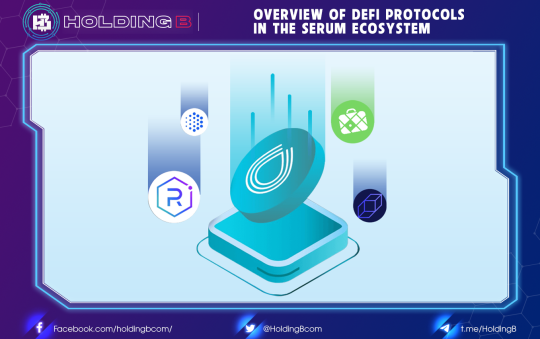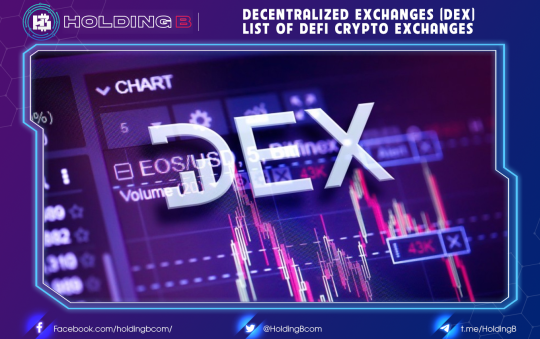Crypto terms are words that are used every day in Crypto transactions, understanding the terms will make it easier for us to access the crypto world. Here are some terms used in crypto you need to know for newbies:
– Blockchain: refers to the entire data block of a cryptocurrency that records all the transactions that have taken place and the electronic money address, the user’s private key, which is often called a distributed ledger.
– Bitcoin: is a cryptocurrency, invented by an anonymous individual or organization using the name Satoshi Nakamoto in the form of open source software since 2009. Bitcoin can be exchanged directly by an Internet-connected device without going through an intermediary financial institution.
– Satoshi: Satoshi is the smallest currency of Bitcoin, 1 BTC is equivalent to 100,000,000 Satoshi. This unit is named after the founder of Bitcoin.
– Altcoin: is a term that describes cryptocurrencies other than Bitcoin. “Altcoin” is the abbreviation for “alternative coin”. Today, some crypto traders have included altcoins in their portfolios in the hope of higher returns.
– Shitcoin: A coin with no potential value or use
-Token: A token is a cryptocurrency that must be based on another cryptocurrency to work.
– HODL: The concept of HODL originated from a post by a member with the nickname Game Kyuubi on the BitcoinTalk forum in 2013 describing why he holds his tokens, despite the falling crypto market. at that time. However, instead of typing “holding”, he mistyped it as “hodling”. You will see this term used frequently on your crypto websites. The humor of the title (misspelled), plus the enthusiastic appeal that this guy wrote was quickly responded to by other members. Many people unanimously chanted “HODL” and even made more supportive memes. The concept of “HODL” was also born from there.
– ATH (All-time-high) & ATL(All-time-low): The highest and lowest price in the history of a coin. This has historical significance as it shows where the coin is relative to its high and low points.
– Bull Market and Bear Market: The market is in an uptrend and vice versa is in a downtrend. It is very easy for investors to make profits in a bull market (Bull Market) whereas it is very easy to lose in a bear market (Bear Market).
– Pump and dump: is a form of market manipulation by inflating the price of a certain cryptocurrency, then continuously selling it for a quick profit. PUMP is Upward price movement , DUMP is Downward price movement
– FOMO: stands for “Fear of Missing Out” which refers to the fear of ignoring profits when a coin is rapidly increasing in price, which means you are describing a situation in which traders rush their heads. invest in a certain cryptocurrency for fear that it will increase in value and they may miss the opportunity to make a profit.
– FUD: stands for Fear – Uncertainty – Doubt, FUD is a fake news tactic used in business, marketing, politics, propaganda… FUD tactics affect perception by creating fake news. Negative and false information causes panic that the market is about to drop sharply.
– To The Moon: is a phrase used to refer to the price of the cryptocurrency market that will increase rapidly.
– Market Cap: The total capitalization of a cryptocurrency, calculated as the price of the coin multiplied by the number of coins. This is important information for coin ratings.
– Max Supply: The maximum amount of coins that can be reached by a cryptocurrency (like Bitcoin is 21 million)
– Circulating Supply: The current supply in the market, the coin index of a cryptocurrency currently in the market.
– Total Supply: Total amount of coins created, including whether it was in circulation or not minus the number of coins burned.
– Staking: is the act of holding and locking a certain amount of coins to receive rewards from them. These coins can be locked in the wallet or nodes of a Blockchain project for a period of time. The reward will be based on the user’s effort, including: staked coin amount & stake duration.
– Yield Farming: is liquidity mining, is a way to generate rewards by holding cryptocurrency. In a word, it means locking the cryptocurrency and getting the reward.
– Mining: Only the act of “mining” cryptocurrency. Usually some special machines are used to solve algorithms to validate transactions in order to receive cryptocurrency rewards. This is the mining of cryptocurrencies using the POW algorithm.
– White Paper: An introductory text of a cryptocurrency; provide project details as well as technical information of that cryptocurrency
– KYC (Know your customer): This is the process of verifying customer information to avoid money laundering by criminals when registering accounts on exchanges. Usually KYC requires a citizen identification card or other cards with personal information, facial recognition… KYC has a risk of losing personal data, you should KYC only for exchanges you can trust. .
– P2P (Peer-to-peer) is the act of sharing information directly between two parties on a certain network without the need for an intermediary server to transmit data.
– AML (Anti Money Laundering): are regulations that prevent money laundering.
– POW: Proof-of-work consensus algorithm, where miners have to prove they have decoded the algorithm in order to receive rewards.
– POS: A proof-of-stake consensus algorithm, in which coin stakingers must lock a certain amount of coins and provide the infrastructure to validate transactions in order to receive rewards.
– ROI: The ratio of profit compared to the initial price of that cryptocurrency when opening for sale.
– Long (buy coin): is to buy. Users buy at low prices, expecting high prices to sell. Take profits when the market goes up.
– Short (sell coin): is to sell. Investors borrow to sell first, expect prices to drop to buy cheap and resell. Take profits when the market goes down
– Airdrop: is a Coin or token (token) that will be released to the user’s wallet for free. Airdrops are often used for ICOs, with the aim of promoting the project’s brand.
– ICO (Initial Coin Offering): is a popular form of fundraising in the field of cryptocurrency. In which the project owner will sell a part of the cryptocurrency they invented to make a profit with a number of popular cryptocurrencies such as Bitcoin, ETH, USDT… with this form can make a large profit if the project Although the project is successful, it is quite risky because it is not guaranteed by anyone and is not recognized by the law, investors can completely be cheated of all invested capital.
– IEO (Initial Exchange Offering): is also a form of fundraising but it is associated with exchanges. The exchange will mediate between the project and investors, so it will be safer than the ICO form. IEOs greatly affect the reputation of exchanges, so they are often carefully screened, but not all IEO projects are successful and profitable.
– IDO (Initial DEX Offering): A form of fundraising and listing of cryptocurrencies in decentralized exchanges.
– Hash: Just a string of characters that looks random because it is mixed by an algorithm that encrypts the original data so that no one can know the data without having its own password. This is the security basis of every cryptocurrency.
– Hash rate: The number of hashes a bitcoin miner can perform in a given time period (usually one second).
– Halving: Just halving the number of coins issued in the new block. Bitcoin Halving once every 4 years, this is the big event of the crypto industry.
– DDoS Attack: An attack by sending large amounts of meaningless or malicious data to cripple an exchange system for the purpose of sabotaging or stealing cryptocurrency.
– Whale: Only investors with extremely large capital; usually from a few tens of millions to a few hundred million USD has the ability to manipulate the market.
– DAO: stands for “Decentralized Autonomous Organization”. An organization built on the blockchain’s set of rules and self-determination has a hierarchical model structure, eliminating cumbersome procedures and costly human resources.
– Dapps: stands for “Decentralized apps”. Essentially, these are programs that use Blockchain to create applications that run on a decentralized network.
– FA (Fundamental Analysis): Fundamental analysis
– TA (Technical Analysis): Technical analysis
Don’t forget to follow useful articles about Crypto Market from team Holding B !!!
- Telegram Channel: https://t.me/HoldingBcom
- Telegram Group: https://t.me/HoldingB
- Website: https://holdingb.com/
- Twitter: https://twitter.com/HoldingBcom
- Facebook: https://www.facebook.com/holdingbcom





